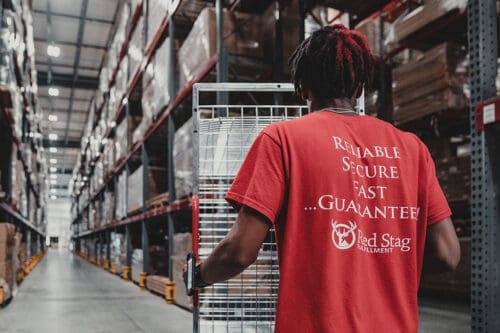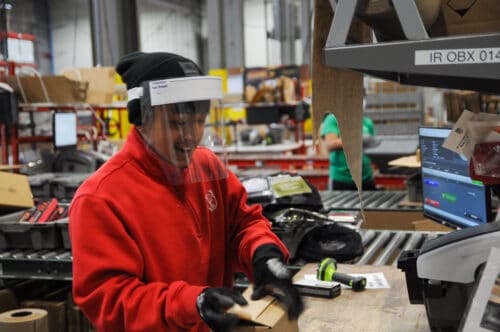Logistics management describes the process of running your supply chain operations, from raw materials procurement through order fulfillment and customer service. Suppose you’re familiar with the concept of working on your business as well as in it. In that case, logistics management is an important way you can work on your eCommerce business to improve operations and position your brand for success.
This guide covers the basics of logistics management and where to get help to enhance your supply chain.

Logistics management definition in supply chain
Logistics is getting something from one place to another. Everyone deals with logistics: how to get kids to and from soccer practice or coordinating various forms of transportation to get yourself from home to a vacation destination. In supply chain management (SCM), logistics management is how you get consumer goods from the factory to the warehouse to the end customer.
Supply chain logistics is both an art and a science. If you can harness big data sets and use that analysis as the basis for logistics decision-making, you refine your inventory forecasting and increase your chances of meeting consumer demand. Therefore, automation is a crucial tool in modern logistics management because it allows you to use large amounts of information to drive real-time decisions.
Logistics services are SCM services provided by companies that manage logistics for other businesses. The most common service to outsource in eCommerce is fulfillment, or 3PL.

Elements of supply chain management logistics
Logistics management requires long-term and forward-looking planning and quick pivots to respond to changing conditions. Here are the main elements of eCommerce logistics management.
Procurement and demand planning
Procurement is ordering stock from your manufacturing supply chain. The process requires understanding the lead time necessary to obtain raw materials, make products, and ship them to your fulfillment warehouses.
Demand planning is the foundation of procurement. Using your sales history and information about market and economic trends, you can create a demand forecast that predicts how much inventory you’ll need and when it should be in stock. From this forecast, you can work backward to make a procurement plan to meet customer demand.
Inbound logistics
Inbound logistics is your finished goods arriving at the fulfillment warehouse. Successful inbound logistics will correctly log your merchandise into the warehouse management system for accurate inventory tracking. Then it quickly moves products to the shelves. To support a fast inbound turnaround:
- Provide the warehouse with advance shipping notices (ASNs). That lets them know what to expect so they can have staff ready to unload it quickly.
- Palletize your stock whenever possible for faster unloading.
- Receiving staff should check the shipment manually against the ASN and bills of lading to be sure they match. Without this step, you may have inventory discrepancies that lead to surprise stockouts in the future.
- Wherever possible, use cross-docking to fill backorders more quickly.
Inbound logistics is the step where your supply chain moves into the control of your fulfillment operations, whether in-house or outsourced.

Warehousing and inventory management
Fulfillment centers aren’t storage warehouses. If your logistics management is functioning well, you move products in and out quickly. However, you still need a robust warehouse management system. A WMS is software that tracks inventory and the movement of goods in and out of the fulfillment warehouse. Excellent warehouse inventory management is the key to keeping product turnover high and avoiding getting stuck with dead stock you can’t sell.
Another crucial element of fulfillment warehouse management is safe product handling. Your warehouse must be configured to safely track, move, and store your products, whether they are small items like nuts and bolts or oversized goods like furniture. If you sell breakable merchandise, the warehouse must be prepared to handle fragile items. Likewise, special handling for potentially hazardous goods, such as e-bikes with lithium batteries, is essential for retailers who sell those items.
Order processing
Order processing in logistics management is also called pick and pack fulfillment. The process starts when a customer places an order online, which generates a pick list given to a warehouse picker. The picker finds the items on the shelves and puts all the products for one order in a bin.
Once the picker finishes with an order, the bin goes to the packing station. The packer checks the items against the packing list to ensure the picker found the correct SKUs in the right number. The packer chooses the ideal box size to fit the order (big enough to hold all the items plus infill for protection, not so big that products can move around inside the box).
Accurate picking and packing are essential to logistics management because they directly impact customer satisfaction.
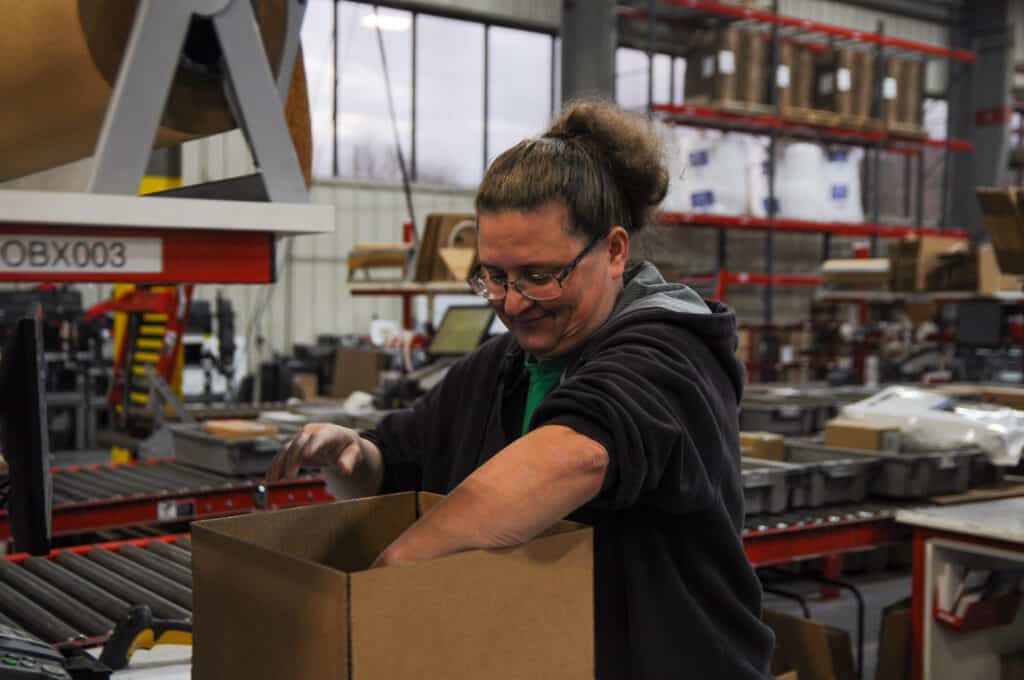
Outbound logistics management
The outbound logistics journey of an eCommerce package starts at the fulfillment warehouse shipping station. Packages are divided by carrier. At large 3PL warehouses such as those operated by Red Stag Fulfillment, delivery services like UPS, FedEx, and USPS make daily pickups.
The delivery company controls the next phase of the supply chain process. Warehouse locations also affect your outbound logistics. The closer you are to your customers, the shorter the delivery time.
Reverse logistics
Logistics management doesn’t stop at the customer’s front door because, in eCommerce, some percentage of purchases will get returned. Reverse logistics is the process of handling returns. Best practices include:
- Provide an online portal for logging returns and printing return labels.
- Pay for return shipping.
- Set up returns processing systems in the warehouse that allow you to quickly evaluate the product, process a refund, and return the item to inventory if it can be resold.
Creating a reverse logistics chain that keeps costs low while also serving the interests of customer satisfaction is a crucial challenge that eCommerce brands must overcome.
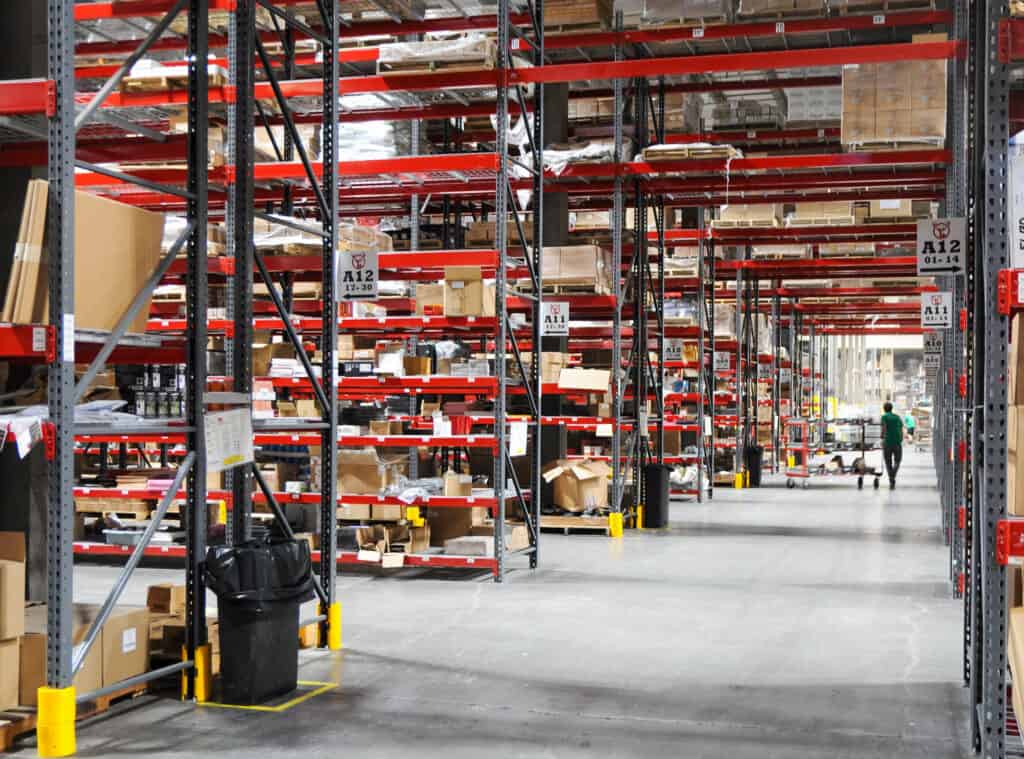
The importance of logistics management to eCommerce success
Optimizing your logistics management is essential to the success of your business because it encompasses the levers you need to pull to manage costs. Your cost of goods sold (raw materials, manufacturing, transport) and your fulfillment costs (warehousing, pick and pack fees, shipping) impact your retail pricing and profit margins.
In addition, a well-managed supply chain ensures (as much as anything can be sure in eCommerce) that you’ll have the inventory you need to fill orders without excess stock tying up your capital. And by adding automation and software tools, you give yourself more power to analyze metrics, make decisions quickly, and flex to meet changing customer demand.
If your logistics function runs well, it will be invisible to your customers. But this unseen operation has a considerable impact on the customer experience, so excellent logistical planning is essential to your brand’s long-term growth and success.
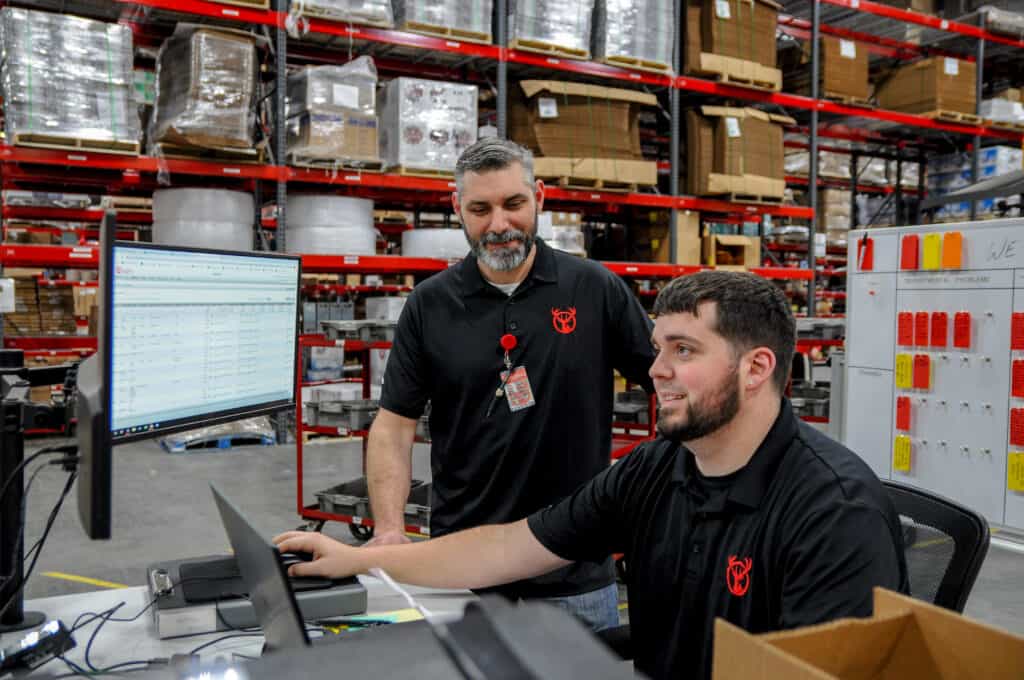
How can a third-party fulfillment company help with logistics management?
You should take an active role in your company’s logistics management, but you don’t have to do it all yourself. Outsourcing your fulfillment to a logistics success partner adds valuable experience and expertise to your team, no matter the size of your enterprise.
Third-party logistics companies like Red Stag Fulfillment do much more than store inventory and fulfill orders. We partner with our clients to help them figure out the solutions to their logistics challenges so they can save money and better serve their customers.
Here are a few ways a 3PL can help you improve your logistics operations.
Transportation management
If your company is like most, your supply chain stretches across borders and continents. Managing the transportation needed to deliver your goods to distribution centers and fulfillment warehouses in the U.S. can be harrowing, particularly with increasing disruptions to global transport routes over the past few years. Your 3PL may offer freight forwarding services or be able to connect you with a freight forwarder that can help you navigate international supply routes to keep your logistics on track.
Inventory planning
Inventory planning is critical to any successful consumer goods business but particularly eCommerce companies. A 3PL with robust systems for inventory control during receiving and fulfillment can provide the accurate data you need to plan and manage your inventory procurement process.
In addition, you can leverage the 3PL’s experience working with many other eCommerce companies to adopt best practices for maximizing inventory turns, minimizing waste, and keeping your stock carrying costs low. In addition, a fulfillment company with a zero shrinkage policy (like RSF) can save you money and increase your inventory accuracy, helping you to plan better.
Fast fulfillment
Speed is a crucial metric that marks the difference between poor logistics and top-notch fulfillment. If an order sits in a queue for days after the customer places it, it slows order delivery to an unacceptable crawl. Services like RSF’s same-day fulfillment get your orders out fast.
Another element that contributes to speed is warehouse locations. When you outsource to a 3PL, you aren’t locked into your headquarters location, as you would be if you handled eCommerce fulfillment in-house. You can reach most U.S. addresses in two days or less with just a few strategic third-party fulfillment warehouses.
Strategic shipping
Controlling shipping costs and optimizing delivery times are crucial to your profit margins and customer satisfaction. As a high-volume shipper, your 3PL may be able to offer shipping discounts you couldn’t obtain on your own. In addition, a large fulfillment warehouse will have an easier time working with multiple carriers, giving you a choice in how to ship each package.

Red Stag Fulfillment makes supply chain logistics simple
Red Stag Fulfillment helps our clients meet all types of logistics management challenges. We know that every company has unique needs. So we work with every client to optimize their logistics and enhance their customer experience. When your business thrives and grows, so does ours, and we’re in the business of helping eCommerce enterprises expand.
Done well, fulfillment drives success in online retail. Our industry-leading accuracy means we ship the right package to the right customer, on time. And our fulfillment guarantees give our clients peace of mind.
At RSF, we strive for perfection in logistics management. How can we help you do the same?
More about logistics management:








